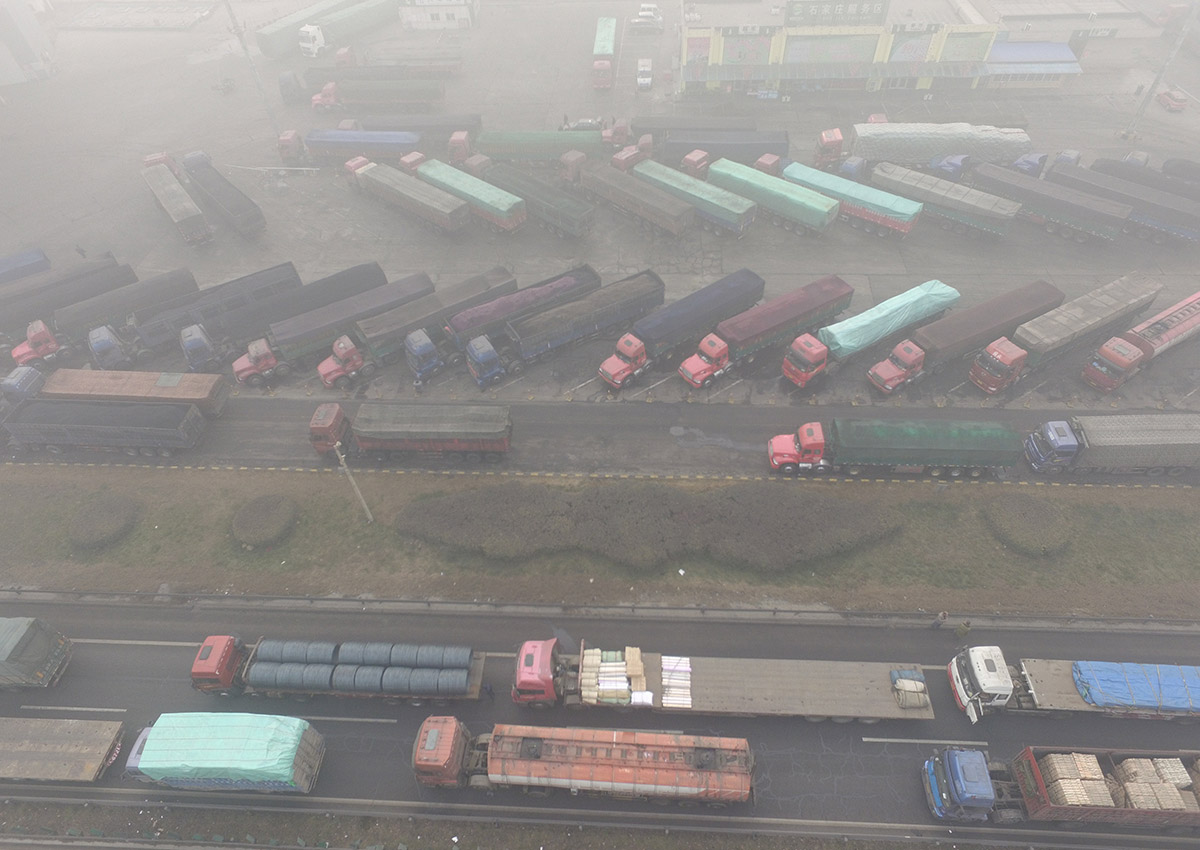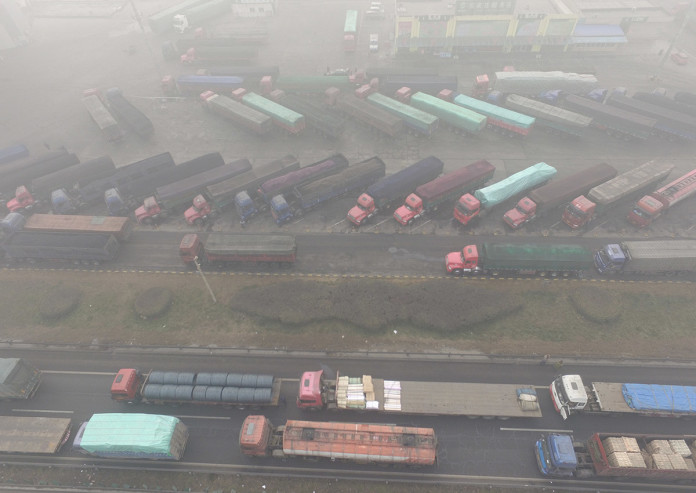SHIJIAZHUANG, China – China’s smoggiest city closed schools Wednesday, as the country suffered through its sixth day under an oppressive haze, provoking public anger about the slow response to the threat to children’s health.
Since Friday, a choking miasma has covered a large swathe of northeastern China, leaving more than 460 million gasping for breath.
Shijiazhuang, the capital of northern Hebei province, was one of more than 20 cities that went on red alert Friday evening, triggering an emergency action plan to reduce pollution by closing polluting factories and taking cars off the road, among other measures.
Nowhere has been hit as hard as the city, which has seen a huge spike in pollution.
But the city’s education department waited until Tuesday evening to announce it was closing elementary schools and kindergartens, following similar moves in neighbouring Beijing and Tianjin.
The announcement said middle and high schools could close on a voluntary basis.
The statement, which appeared on the education department’s official social media account provoked anger.
“Are middle school students’ bodies’ air purifiers?” one incredulous commenter asked, adding “Are you going to wait for us all to become sick before you step up to fix this?”
A picture from neighbouring Henan province showing more than 400 students sitting an exam on a football pitch after their school was forced to close was widely circulated on social media, further fuelling discontent.
Shijiazhuang has seen 10 bouts of serious air pollution so far this winter, according to the China Daily newspaper, putting it at the top of the environmental ministry’s list of cities with the worst air quality.
Over the last 48 hours, levels of PM 10 in the city have been literally off the charts, with readings of the larger particle, a major source of haze, repeatedly maxing out at 999.
Levels of the smaller PM 2.5, tiny enough to be absorbed into the bloodstream and thought to be a major contributor to respiratory and cardiovascular disease, reached as high as 733, more than 29 times the World Health Organisation’s daily recommended maximum exposure of 25.






